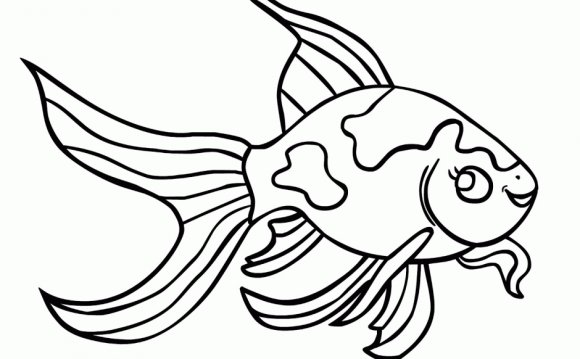
Biology In Elementary Schools is a Saint Michael's College student project from a course that ran between 2007 and 2010. The student-created resources have been preserved here for posterity. Link under 'toolbox' for printer-friendly versions of the exercises. Click on handouts to print full resolution versions. Please see Wikieducator's disclaimer, our safety statement, and the Creative Commons licensing in English and in legalese.
Student worthiness
Tried and Trusted
Primary biological content area covered
We will be exploring the concept of behavioral ecology in relation to Betta fish (Siamese Fighting Fish) in conjunction with their nutrition and anatomy. Betta fish are not allowed to be kept in the same tank because they are very territorial; they will fight until death.
Materials
- Four betta fish (2 Male and 2 Female)
- Two betta fish containers equipped with dividers (one bowl for each fish would work using cardboard dividers so the fish cannot see each other)
- an extra bowl used for transferring fish (if using container with built in divider)
- One or two fish nets
- Tap water conditioner (example, Pro-Line)
- Colored pencils and markers
- Construction paper
- Chart to record observations
- Large picture of a betta fish
- Betta fish coloring book handout (one per student)
Description of activity
The purpose of this activity is to observe the behaviors and reactions of Betta fish when placed in close proximity of each other. We will have 3 pairs of Betta fish including 2 male, 1 male and 1 female, and 2 female, each of which will be placed in a separated fish tank. If you do not have fish tanks with dividers, fish bowls and a piece of cardboard (as a divider) will work just fine. Betta fish cannot be placed in the same tank. Betta fish are Siamese Fighting Fish and can seriously injure or even kill one another if placed in the same tank. A teacher must be there to supervise the experiment and have total control of the fish.
Lesson plan
Figure 3: Male Betta Fish.- Introduce the topic of the experiment and why we are exploring it.
- Show a picture of the Betta fish and scaffold the students into identifying the different anatomical parts of the fish.
- Ask the students to generate hypotheses. How do the students think each pair of fish is going to react to one another?
- Begin the experiment by removing the divider and enabling the two female Betta fish (Figure 2) to gain vision of each other (be aware that when the black divider is removed, there is still a clear piece of plastic that separates the fish). Have the students observe and discuss. The teacher(s) will write the students' observations on the chart.
- Next, allow one male Betta fish and one female Betta fish to view each other. Have the students observe and discuss. The teacher(s) will write the students' observations on the chart.
- Allow the two male Betta fish (Figures 1 and 3) to view each other. Have the students observe and discuss. The teacher(s) will write the students' observations on the chart.
- Read the "Betta Fish Coloring Book" story that explains how to care for a Betta fish.
- Allow the students to color in their own book. Ask the children to color the fins one color. See if they remember where the fins are. Then ask them to color the gills a different color. See if they can identify the gills, fins, scales, etc.
- The students can continue coloring their books if time allows.
Potential pitfalls
- By using the same 3 pairs of fish, the fish may become desensitized and not react to each other when the divider is removed.
- If one of the fish does not recognize that there is another fish, which may occasionally happen, the outcome of the experiment may be delayed and the time schedule will be effected.
Math connections
- Students can organize data by recording their findings in relation to the behavior of each pair of betta fish on a table.
- Students can also analyze their findings by creating a venn diagram to display the behavioral traits or each pair of Betta fish and whether or not they share any similar behavioral traits.
Literature connections
Children's literature that provides general information about Betta fish, or more specifically how to care for a Betta fish, might be a useful supplement for this lesson.
Silverstein, Virginia. Fabulous Fish. 21st Century, 2003.
Lionni, Leo. Swimmy. Random House Childrens Books, 1973.
Swimmy is one of many Caldecott Honor-winning books by Leo Lionni. Swimmy is a lone black fish in a school of red fish who also swims a lot faster than the rest of the fish. One day a big Tuna gobbles down the school of red fish, but Swimmy is too fast for the Tuna and manages to escape. He becomes lonely in the deep dark ocean until he finds a new school of red fish who are to terrified to leave their cave. Swimmy devises a plan to have all the fish swim together to create an illusion of one large fish to scare the other big fish away.
Connections to educational standards
CS#5-Life Science
- Living and Non-Living Things
(VT State Standards: PK-K:30)
Skills-Learning Outcomes
- Wonder, plan, investigate, reflect, share, and act through the scientific method.
S:2-3, 5-7
7.1 Scientific Method (VT State Standard)
- Ask questions about objects, organisms, and events
- Use reliable information obtained from scientific knowledge, observation, and exploration
- Recognize other points of view, and check their own and others' explanations against experiences, observations and knowledge
7.3 Theory (VT State Standard)
- Look for evidence that explains why things happen
- Modify explanations when new observations are made or new knowledge is gained









